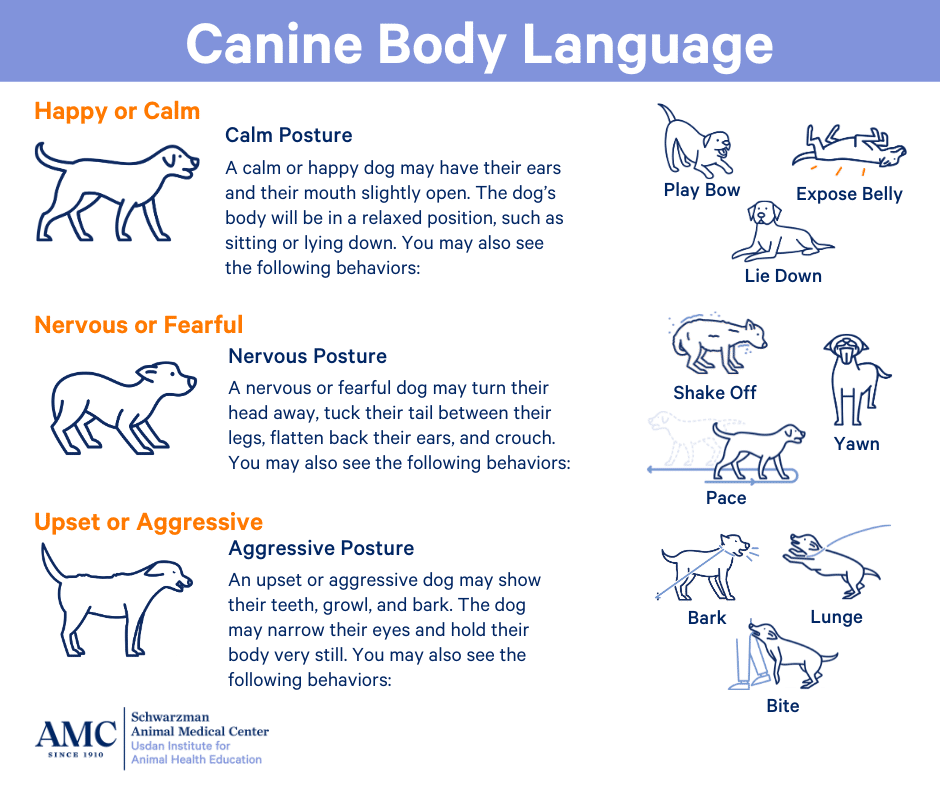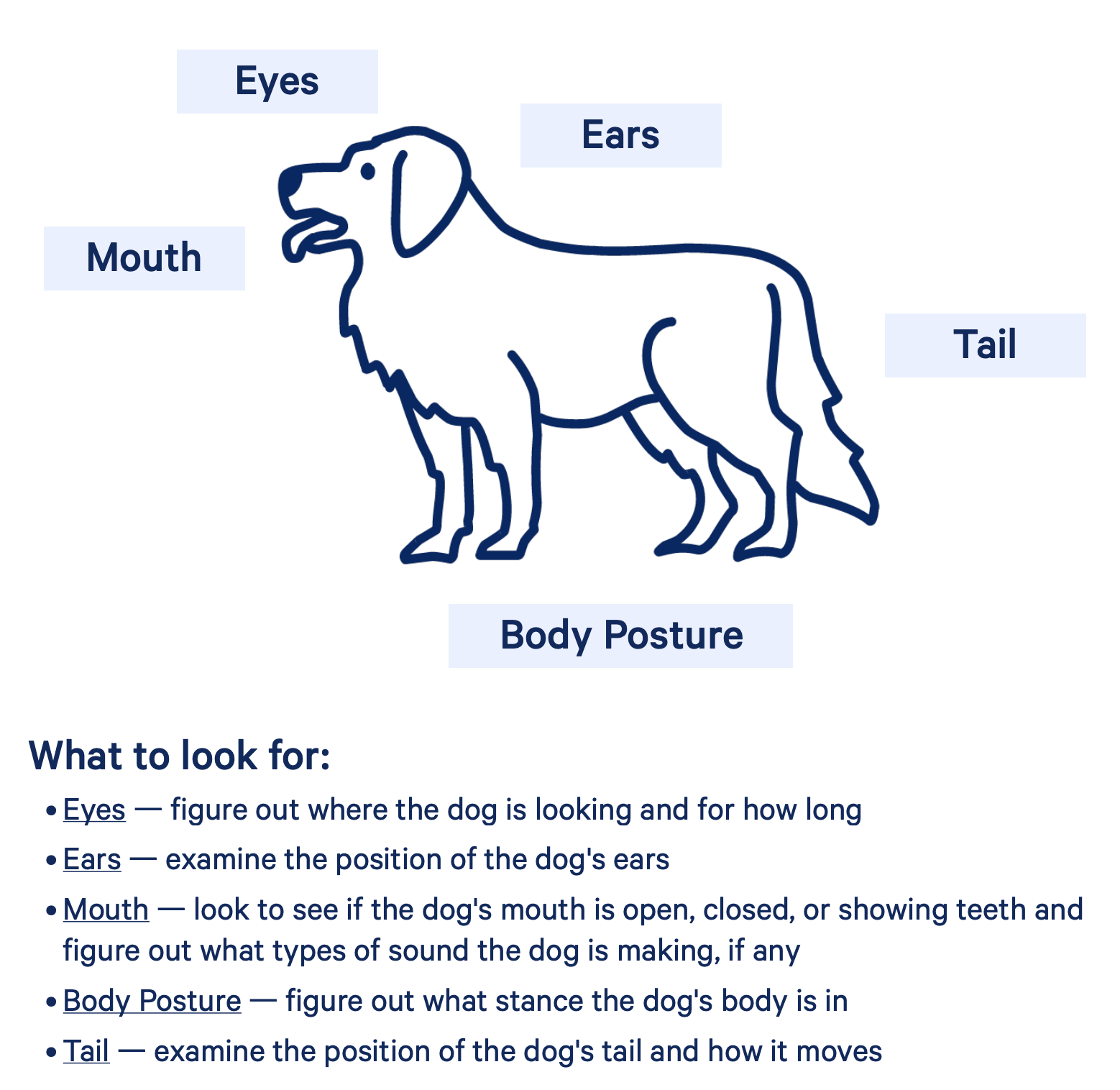Body Language of Dogs
While dogs do use sounds to communicate, many of the messages they send are non-verbal. Observing your dog’s body language, especially their facial expressions and body postures, can help you understand when your dog may be nervous about what’s going on around him, or if your dog is upset and might snap at another dog or a person. It’s important to consider the context of the situation, but here are some common body postures and what they may mean.
































